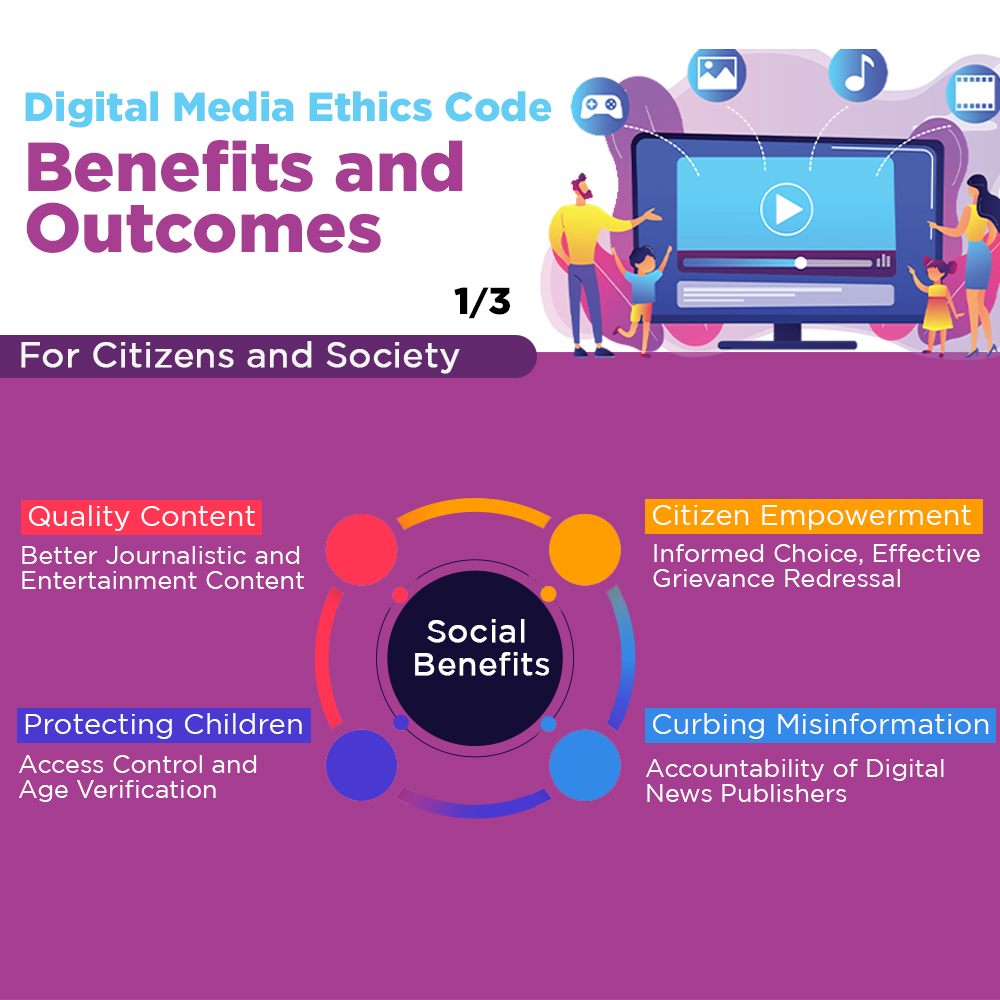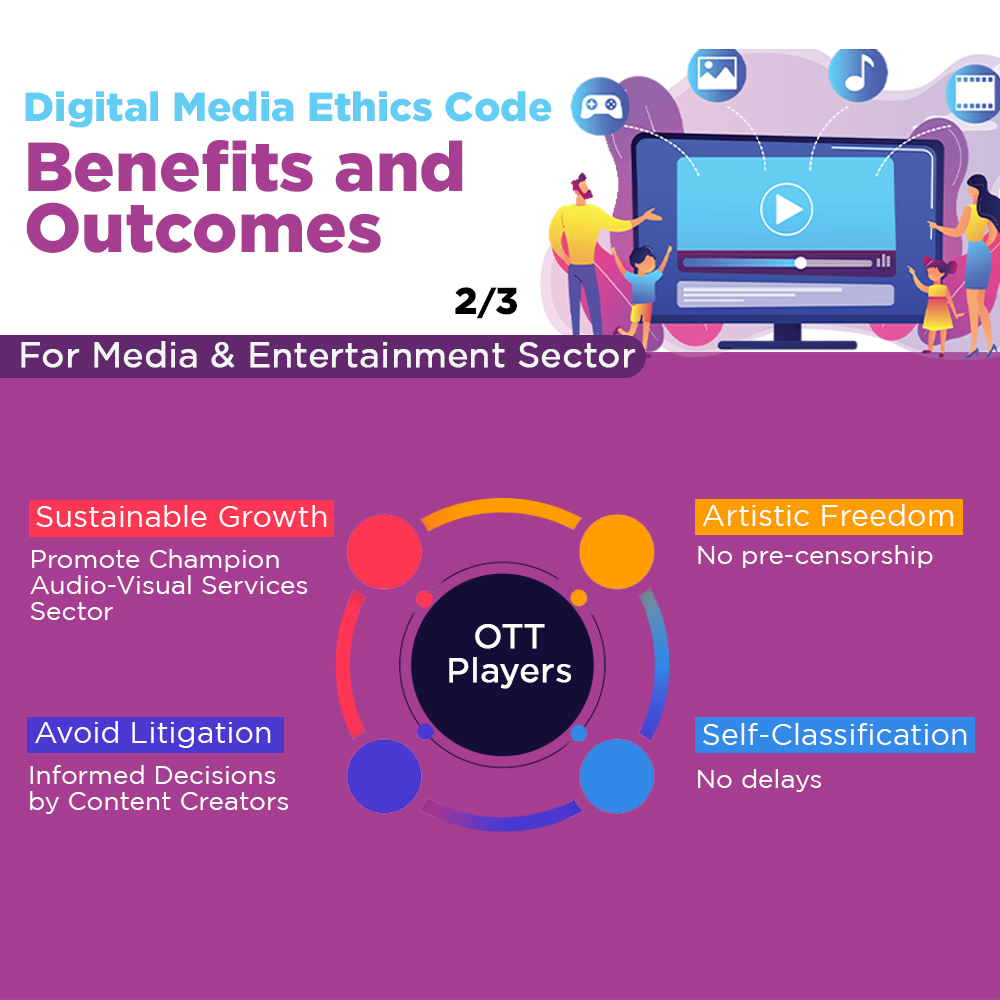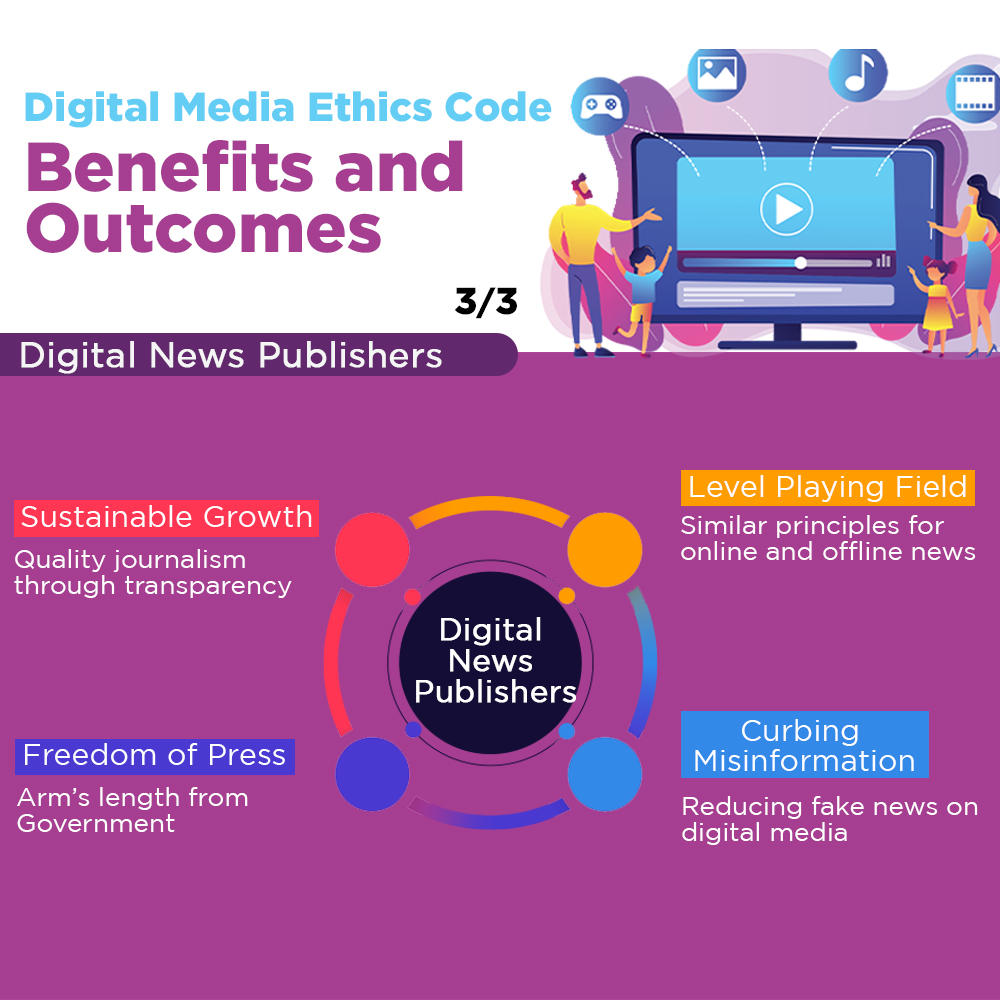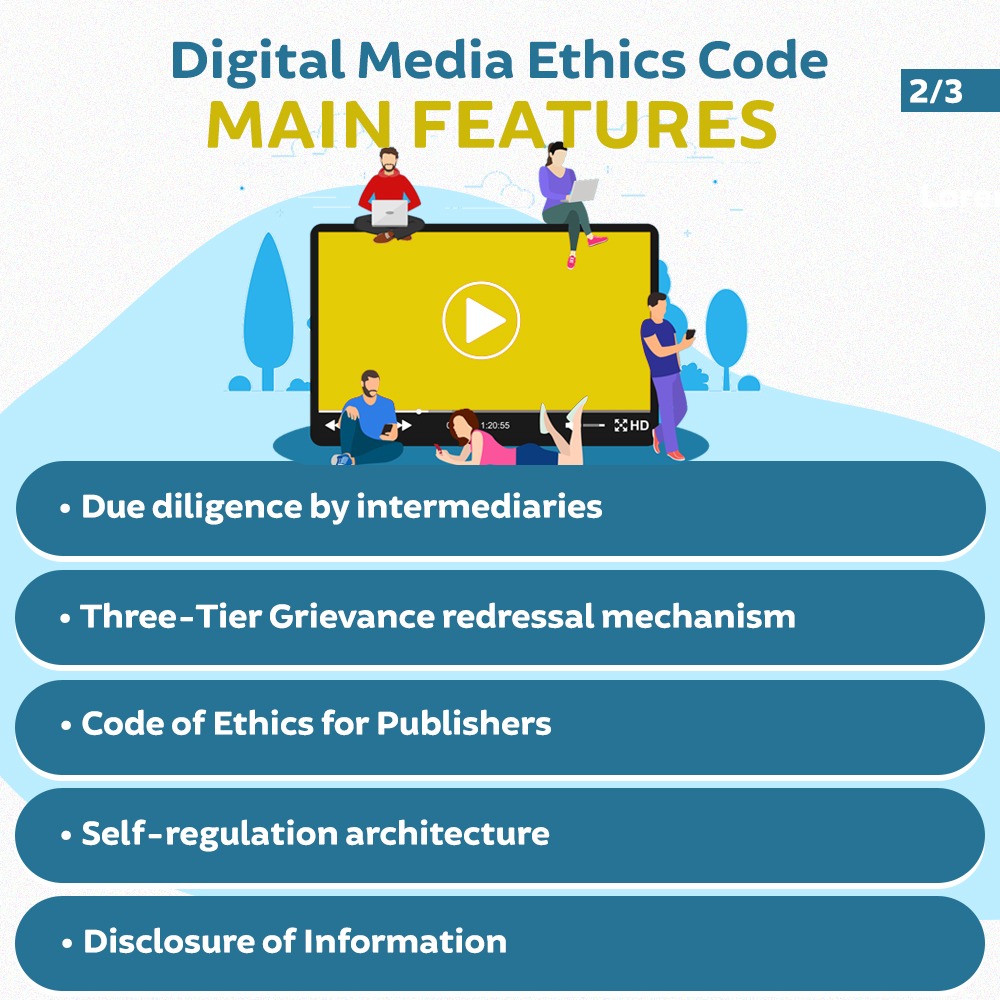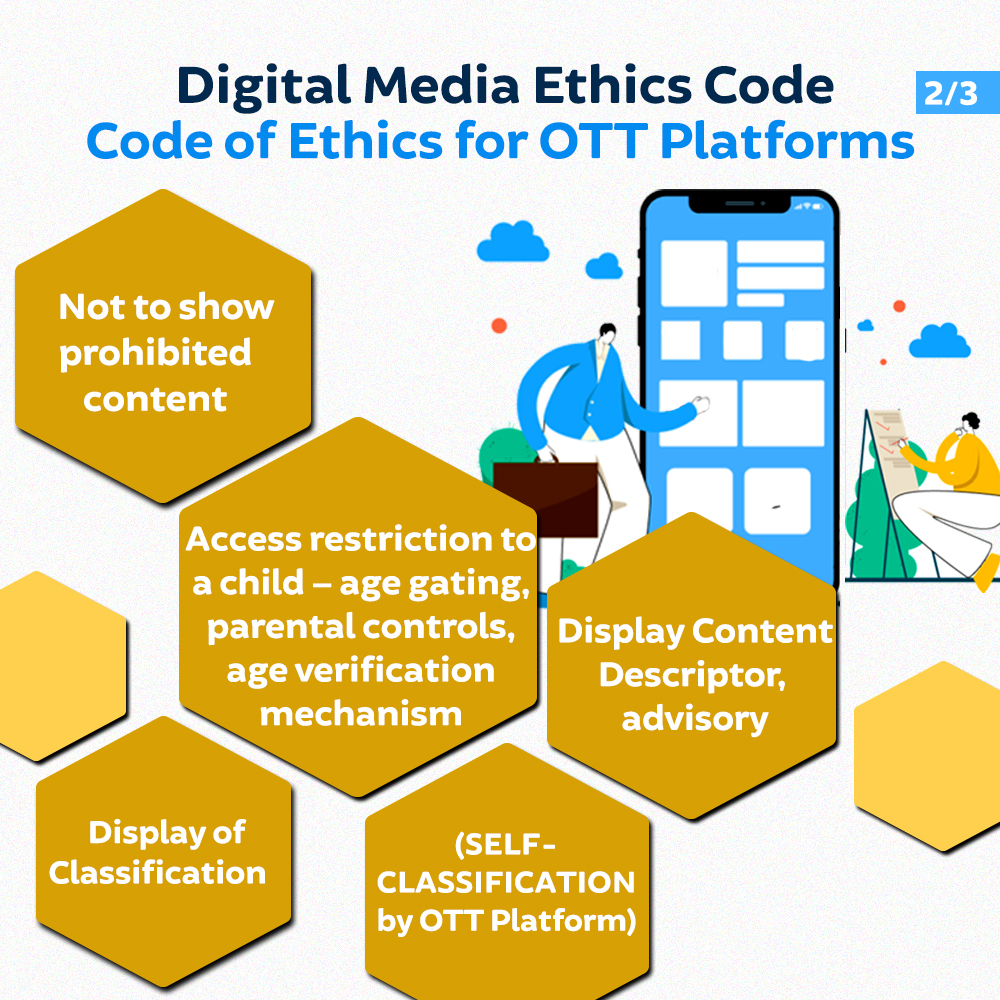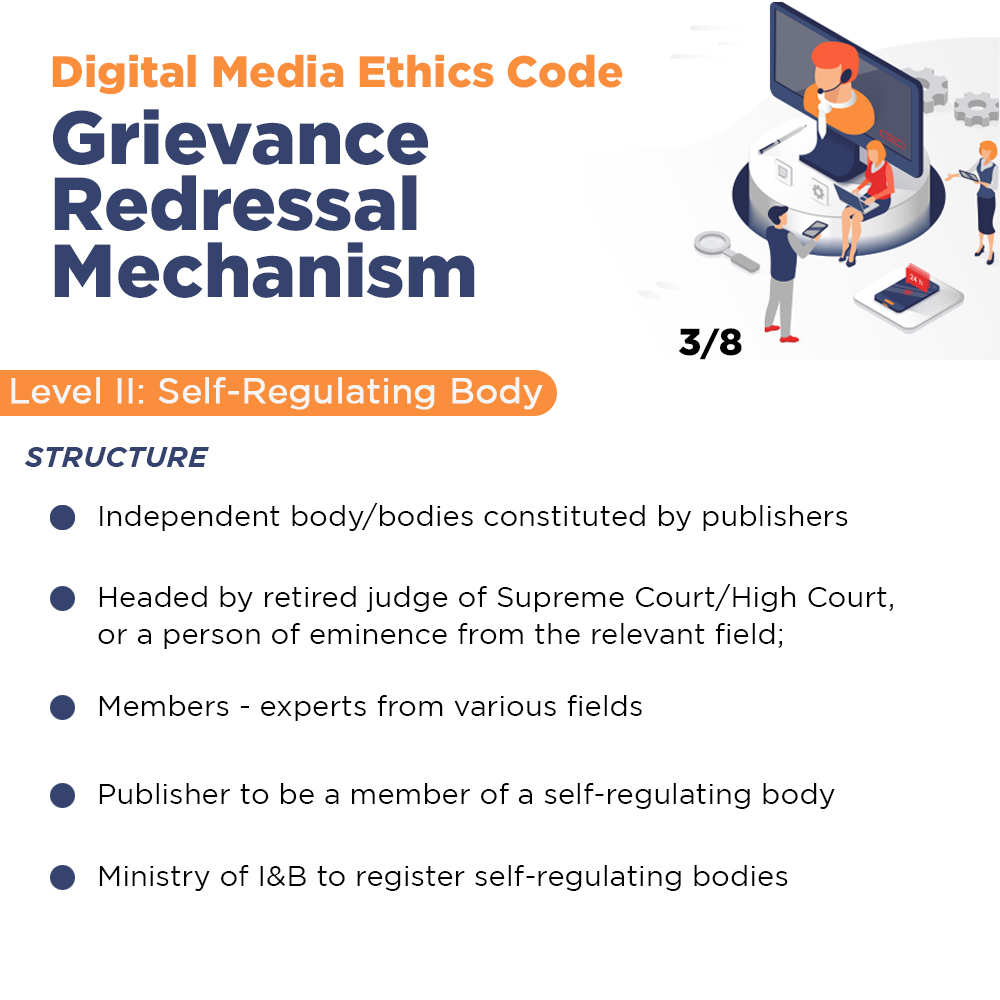Government notifies Information Technology (Intermediary Guidelines and Digital Media Ethics Code) Rules 2021
March 03, 2021Information Technology (intermediary Guidelines and Digital Media Ethics Code), Rules, 2021
With the advancement of science, new technologies have provided an opportunity for exponential expansion of print media as well as digital media. In this OTT platforms and digital news portals are now established and are working well. The problem was that for these new sectors there was no institutional mechanism. When the Press has the Press Council of India and TV has its own self regulation and films have Central Board of Film Certification, these new platforms had no such arrangement.
There was a demand for bringing such parity and mechanism by media experts, filmmakers and industry experts, trade organizations/bodies and the people at large. These apart, there have been serious grievance from parents and guardians over the adult, violent and such other content which is harmful to children. There is also a need to empower the citizens for their grievance redressal. Due to absence of an institutional set up, citizens do not know where to send their grievances or file complaints or suggestions relating to content on OTT or on digital news. There was demand from all sectors that there must be some arrangement by which a level playing field can be provided to all the media categories.
The Digital Media Ethics Code, under the Information Technology (Intermediary Guidelines and Digital Media Ethics Code) Rules, 2021 establishes an institutional mechanism for digital news portals and OTT platforms.
Main features of the Rules
The rules establish a soft touch progressive institutional mechanism with a level playing field featuring a Code of Ethics and a three-tier grievance redressal framework for news publishers and OTT platforms on the digital media. The OTT platforms would self-classify the content into five age based categories- U (Universal), U/A 7+, U/A 13+, U/A 16+, and A (Adult). Platforms would be required to implement parental locks for content classified as U/A 13+ or higher, and reliable age verification mechanisms for content classified as “A”. Publishers of news on digital media would be required to observe Norms of Journalistic Conduct of the Press Council of India and the Programme Code under the Cable Television Networks Regulation) Act thereby providing a level playing field between the offline (Print, TV) and digital media.
Grievance redressal mechanism
A three-level grievance redressal mechanism has been established under the rules with two levels of self-regulation- Level I being the publisher and Level II being the Self Regulatory Body, and the third level being the Oversight Mechanism under the Ministry of Information & Broadcasting. The rules provide for an effective grievance redressal mechanism for receiving, processing, and time-bound disposal of public grievances related to the Code of Ethics. The self regulatory body would be headed by a retired judge of the Supreme Court or of a High Court, or by a person of eminence from the relevant field, and can issue advisories to the publisher.
The mechanism is based on the principles of minimum Government intervention; however platforms should develop a robust grievance redressal mechanism on their own.
Benefits of the Rules
The institutional mechanism established by the Digital Media Ethics Code would provide a stable policy environment to encourage growth in the OT industry, bring in investments and generate jobs thereby providing a boost to the Champion Audio-Visual Services Sector. Self certification of content by OTT platforms would ensure artistic freedom for content creators and prevent delays. The Code would also empower the citizens to make informed choices about content, get their grievances redressed in definite time frames, and protect children.
The Code of Ethics for news publishers would help to fight fake news on digital media through a mechanism of accountability of publishers while providing a level playing field between online and offline (Print and TV) news publishers. The rules also open up new avenues for further engagement and coordination with the digital news publishers which would be recognized for the first time under law through the process of furnishing information.
At a time when the digital media governance is in a state of flux across the globe, the Digital Media Ethics Code is thus a transformative step which would raise India’s stature at an international level and serve as a model for other nations to emulate.
Latest News and Events
- December 12, 2025: Applications Open for the 86th Know India Programme (KIP)
- December 10, 2025: Shillong Chamber Choir performance at the Royal Birmingham Conservatoire. - 5th December, 2025
- December 04, 2025: Pariksha Pe Charcha (PPC) 2026
- December 03, 2025: Media lunch at Consulate General of India Birmingham - 2nd December 2025





